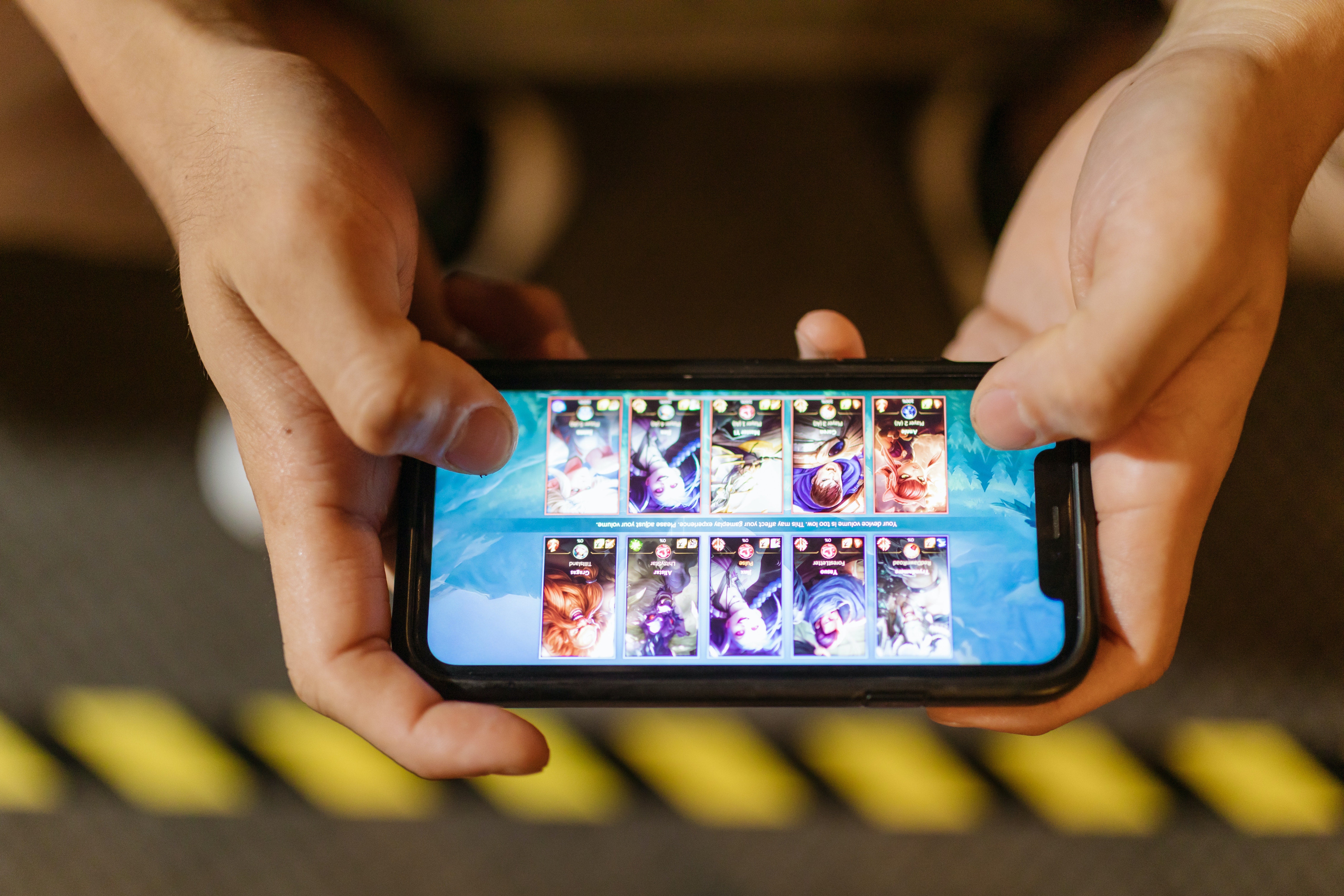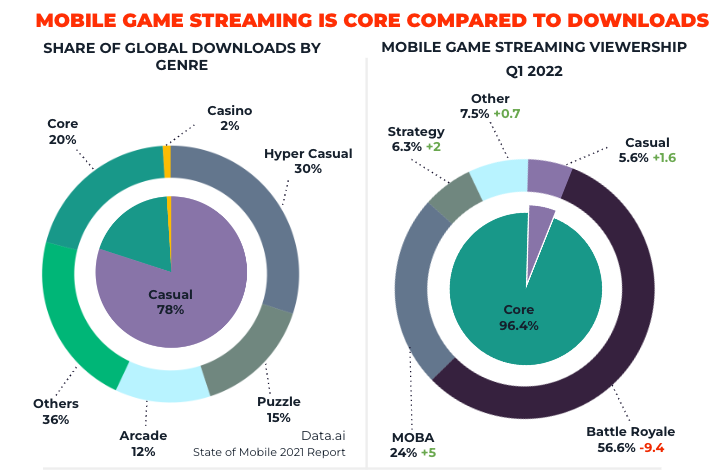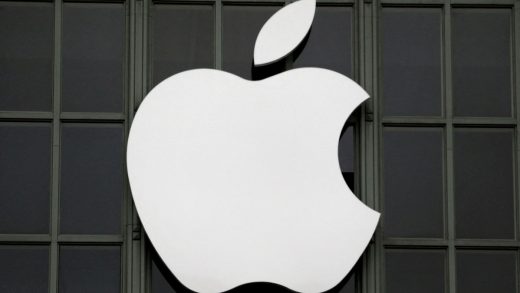
If you’re a regular Twitter user and keep up to date with gaming news on the platform, you’ll be very aware of the gaming Twitter discourse that happens at least once a month.
At the end of May, indie game coverage (or the lack thereof) was the subject of discourse. The replies from those sharing their thoughts paint a pretty complicated picture, from nuances around the SEO value of indie game coverage to some indie studios lacking the PR resources to get their times out there.
All of this got me thinking about mobile games, which share a lot of the same challenges as indie games when it comes to coverage and representation but have a 60% market share of the global gaming industry, and generate triple the amount of revenue as console and PC/Mac games.
Simon Carless from The GameDiscoverCo pointed out in a recent newsletter that the mobile gaming market is rarely discussed in great detail outside of specialist websites despite its immense size.
When mobile games are covered, that coverage is limited to financial updates on major mobile titles from the likes of Nintendo, news on AAA ports such as Apex Legends and Call of Duty: Mobile, or negative stories on monetisation methods, the most recent example being backlash to Diablo Immortal.

It’s a shame, mainly when negative headlines surround a major release such as Diablo Immortal; it gives the impression the entire industry lacks substance and is nothing more than a giant pool of microtransactions. That couldn’t be further from the truth, especially with Diablo Immortal, which you can sink 40 hours and complete without having to spend a single penny. With the added bonus that it’s also an excellent game, surely that’s good value for money?
The mobile gaming market landscape is very different from what it was a couple of years ago, and there are still plenty of misconceptions about how mobile games look and play and how the industry operates.
While hypercasual games still make up a large chunk of the market, and there’s always going to be a focus on monetisation elements due to the nature of freemium games, mobile games have evolved into more polished products thanks to a combination of more powerful hardware, cloud gaming, and major publishers releasing mobile versions of their franchises. More controller support makes playing these games just as enjoyable as on PC and console.
As a result, we’re seeing more mobile games associated with core audiences being played on streaming platforms such as Twitch. While core games currently only make up 19% of mobile game downloads, they generate 96% of mobile game streaming hours watched, according to analytics provider StreamHatchet.

Alongside the big names like League of Legends: Wild Rift, Final Fantasy: The First Soldier and Diablo Immortal, you might be surprised to learn that there’s a mobile version of Thatgamecompany’s Sky: Children of the Light which has now surpassed ten million downloads. This indie hit is now one of China’s most popular mobile games.
And don’t even get me started on Garena Free Fire, one of the biggest games in the world with over 150 million users but one which is rarely discussed.
What’s great about the mobile game market — and where I believe credit is due — is that the mobile versions of Apex Legends and Call of Duty: Mobile are way more than just simple ports. The competitive nature of the mobile landscape means console and PC ports often get updated with new features. As an example, Apex Legends Mobile added a new character, a 4v4 team deathmatch mode, and upgradable mastery levels for all of its characters (which aren’t monetised, by the way!)
There are still plenty of misconceptions about how mobile games look and play and how the industry operates
New gameplay features and modes aren’t the only areas where mobile games are innovating; they’re leading the way with live events and brand collaborations, especially in Japan and China.
While there’s only a handful of live events in major console and PC games, they’re everywhere in the mobile market and happening all the time.
In the last three months alone, we’ve seen Assassin’s Creed and K-pop titans BTS appear in Garena Free Fire, Hello Kitty in Mobile Legends: Bang Bang, the pop idol group Hinatazaka pop up in the auto-battle RPG game Hinakoi, HunterXHunter in Puzzle & Dragons, Final Fantasy XV in Gran Saga, Neon Angelis in PUBG Mobile, and the worlds of DC Comics and AMC’s The Walking Dead colliding with State of Survival.

They’re just some of the collaborations from the last three months, without mentioning the constant updates for seasonal events and anniversary celebrations. Again, this is down to the competitive nature of the mobile market — developers are constantly adding new features, gameplay elements and live events to keep their players coming back — and it works. The tenth-anniversary update for endless runner Subway Surfers, added timed events, challenges and new characters, causing a 109% increase in revenue and a 90% increase in downloads.
Of course, there are some practical reasons why mobile games don’t enjoy the same levels of coverage and media attention as PC, console or indie games. The mobile industry hasn’t spent time cultivating relationships with wider non-mobile gaming press, with publishers often investing their marketing spend into user acquisition with in-game targeted ads. This is versus the more traditional brand-building activities such as site takeovers and general advertising, which we would typically see happening for console and PC titles in the more mainstream games press.

Many game websites are also growing their SEO teams and creating content that responds to search queries. Except for a few big names, search volume for most mobile games isn’t that high, primarily due to the casual makeup of the market and the fact that many of the most popular mobile games — Garena Free Fire is a good example here — find success in the fastest growing mobile territories such as India, China and Latin America.
Monetisation practices will always exist in the mobile market due to the nature of free-to-play games, but there are some rightful concerns about how predatory some of these tactics are.
Plenty of GAAS titles in the mobile market are short, don’t lack much in playability, and are generally designed to take money out of players. Similarly, many titles offer a freemium experience but inundate players with forced ads or paywalls. I feel your pain if you’ve ever excitedly downloaded a new mobile game only to hit a wall several hours in. It’s something that’s happened to me plenty of times.
Some bad apples are still out there, but the mobile market is in a much better place now than it was a couple of years ago regarding monetisation practices. For example, there’s an influx of publishers reassessing their approach to gachas and loot boxes by implementing previews or being more transparent with pull rates so they can see the chances of getting the item(s) they want and make more informed decisions off the back of that.
There are solid mobile experiences where you don’t have to spend a single penny. Hearthstone, Call of Duty: Mobile, Apex Legends Mobile, Fire Emblem: Heroes and League of Legends: Wild Rift are all worth your time.
I believe we’re only at the beginning of major publishers and developers investing heavily into the mobile market. Expect to see more ports of your favourite franchises, mobile exclusives and more companies such as Sony PlayStation and Microsoft trying to emulate the success of Nintendo’s highly profitable mobile strategy. As mobile games become more premium in style and appearance, I also suspect we’ll see new IPs launching into the market too.
In turn, this should hopefully expand the coverage of mobile game titles and encourage more people in the video game industry — peers and players alike — to learn more about the mobile game market, and hopefully move away from the misconception that mobile games are just cash grabs or inferior versions of their console counterparts.
There’s a lot of good and exciting stuff happening in mobile games. Like indie games, sometimes you just need to venture further out to read about it.
Correction: This article previously referred to Thatgamecompany’s Child of Light instead of Sky: Children of the Light. This has been amended.


